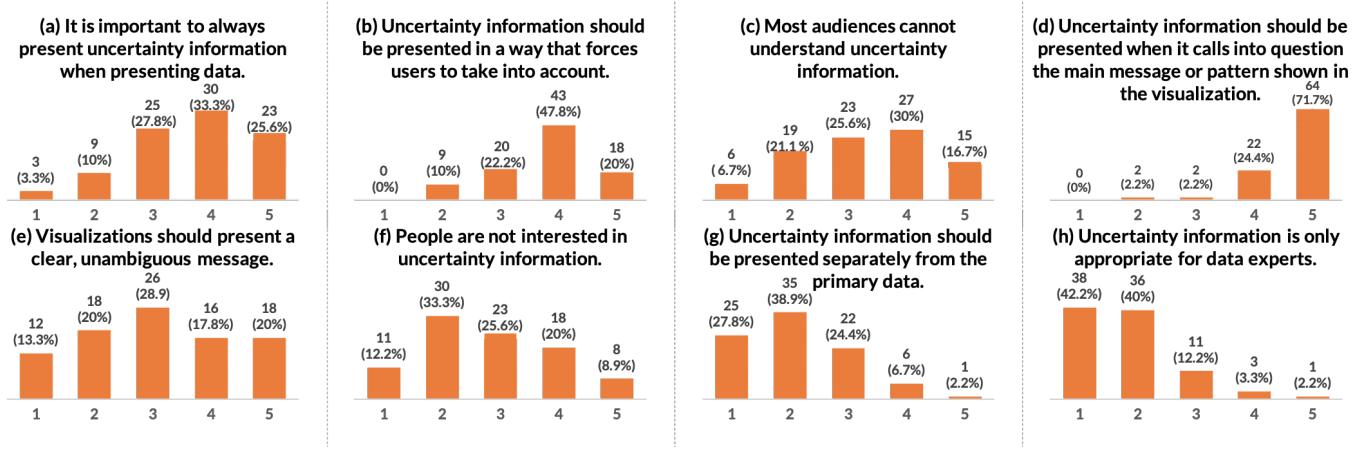Why Authors Don't Visualize Uncertainty
Jessica Hullman
IEEE Trans. Visualization & Comp. Graphics (Proc. INFOVIS) 2019

Survey participants’ ratings of their agreement with statements on a 5pt scale (1=Strongly Disagree, 5=Strongly Agree).
Abstract
Clear presentation of uncertainty is an exception rather than rule in media articles, data-driven reports, and consumer applications, despite proposed techniques for communicating sources of uncertainty in data. This work considers, Why do so many visualization authors choose not to visualize uncertainty? I contribute a detailed characterization of practices, associations, and attitudes related to uncertainty communication among visualization authors, derived from the results of surveying 90 authors who regularly create visualizations for others as part of their work, and interviewing thirteen influential visualization designers. My results highlight challenges that authors face and expose assumptions and inconsistencies in beliefs about the role of uncertainty in visualization. In particular, a clear contradiction arises between authors’ acknowledgment of the value of depicting uncertainty and the norm of omitting direct depiction of uncertainty. To help explain this contradiction, I present a rhetorical model of uncertainty omission in visualization-based communication. I also adapt a formal statistical model of how viewers judge the strength of a signal in a visualization to visualization-based communication, to argue that uncertainty communication necessarily reduces degrees of freedom in viewers’ statistical inferences. I conclude with recommendations for how visualization research on uncertainty communication could better serve practitioners’ current needs and values while deepening understanding of assumptions that reinforce uncertainty omission.
